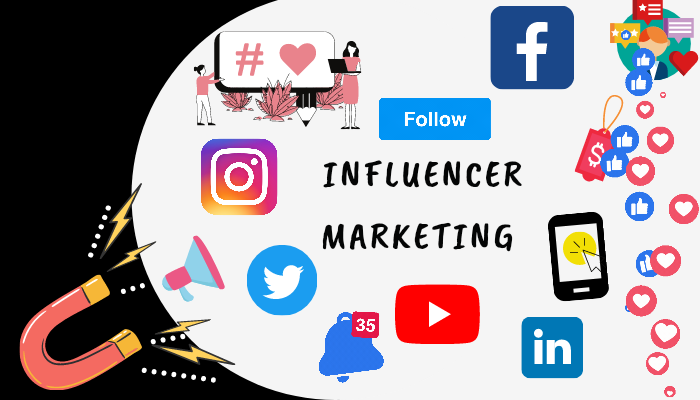INTRODUCTION
In today’s digital world, traditional advertising is losing its edge, and influencer marketing has emerged as a powerful alternative. By leveraging the credibility and reach of social media influencer brands can connect with their target audience in a more authentic and engaging in a more authentic and engaging way.
What is Influencer Marketing ?
Influencer marketing is a strategy where brands collaborate with influencer individuals with a dedicated following on social media to promote products or services. These influencers can be celebrity industry experts or everyday content creators with niche audiences.
Types of Influencers:
- Mega Influencer (1M+ followers) Celebrities and well- known personalities with massive reach but high costs.
- Macro Influencer (100-1M followers) Established content creators with strong engagement in a broad niche.
- Micro Influencer (10k-100k followers) Smaller yet highly engaged audience, cost effective for niche marketing.
- Nano Influencer (1k-10k followers) everyday users with a small but loyal audience, often trusted within their communities.
Why Influencer Marketing Works:
- Authenticity & Trust: Influencer build relationships with their audience making brand endorsements more credible.
- Higher Engagement Rates: Influencer posts often receive more likes, comments and than brand created content.
- Better ROI: MAny businesses see a higher return on investment compared to traditional advertising.
- Target Reach: Brands can connect with a specific demographics based on an influencer audience
Trends in Influencer Marketing:
- AI & data driven Decisions: Brands are using AI to find the right influencer and analyze campaign success.
- Video Content Dominance: Platforms like Instagram Reels and YouTube shorts are driving influencer marketing growth.
- Authenticity Over Perfection: Audiences prefer real, unfiltered content over heavily edited ads.
- Long Term Partnerships: Brands are shifting from one-time collaborations to ongoing influencer relationships.

